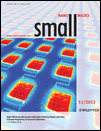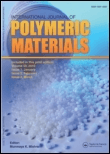
Biointerphases
Scope & Guideline
Exploring the frontiers of biomaterials and their life-changing applications.
Introduction
Aims and Scopes
- Biological Interface Interactions:
Research on how biological molecules and cells interact with synthetic materials, including studies on adhesion, biocompatibility, and the effects of surface modifications. - Material Characterization Techniques:
Utilization of advanced characterization methods such as atomic force microscopy, time-of-flight secondary ion mass spectrometry (ToF-SIMS), and vibrational sum frequency generation spectroscopy to investigate surface properties and molecular interactions. - Nanotechnology and Biomaterials:
Exploration of nanostructured materials and their applications in drug delivery, biosensing, and tissue engineering, emphasizing the design of materials at the nanoscale to enhance biological performance. - Environmental and Health Implications:
Investigation of the impact of materials and pollutants at biological interfaces, including studies on the behavior of per- and polyfluoroalkyl substances (PFAS) and other emerging contaminants. - Innovative Therapeutic Strategies:
Development of new therapeutic approaches using bioengineered materials, such as drug-eluting devices and engineered nanoparticles for targeted therapies.
Trending and Emerging
- Smart Biomaterials:
There is an increasing focus on the development of smart biomaterials that respond to environmental stimuli, such as pH or temperature changes, which enhance their functionality in biomedical applications. - 3D Bioprinting and Tissue Engineering:
Research on 3D bioprinting technologies and their applications in creating complex tissue structures is gaining momentum, emphasizing the potential for personalized medicine and regenerative therapies. - Antimicrobial Surfaces and Coatings:
The exploration of surfaces engineered for antimicrobial properties, particularly in response to the global health challenges posed by antibiotic resistance, is a significant trend, reflecting the urgency for innovative solutions. - Nanomedicine and Targeted Therapy:
Emerging research in nanomedicine, particularly the use of nanoparticles for targeted drug delivery and cancer therapy, is on the rise, showcasing the integration of nanotechnology into therapeutic strategies. - Environmental Health and Safety:
An increasing number of studies are focusing on the implications of materials and pollutants on biological systems, indicating a trend towards understanding the environmental impacts of materials used in biomedicine.
Declining or Waning
- Traditional Biocompatibility Studies:
There has been a noticeable decrease in publications focused solely on traditional biocompatibility assessments without the integration of advanced materials or novel methodologies. Current research is leaning more towards innovative approaches that combine multiple disciplines. - Static Surface Characterization:
Research focused exclusively on static surface properties, without considering dynamic interactions or environmental influences, is becoming less common. There is a growing emphasis on real-time monitoring and the effects of environmental conditions on biological interactions. - Basic Polymer Science:
While polymer science remains essential, the focus on basic polymer properties without application to specific biomedical or environmental contexts is declining. The trend is shifting towards polymer applications that address specific biological challenges.
Similar Journals

Regenerative Biomaterials
Exploring New Frontiers in Regenerative MedicineRegenerative Biomaterials, published by Oxford University Press, serves as a premier platform for the dissemination of innovative research in the rapidly evolving field of biomaterials. Since its inception in 2014, this esteemed open-access journal has fostered a collaborative and diverse scientific community, providing free access to impactful articles that enhance our understanding of regenerative medicine and tissue engineering. With a commendable impact factor and ranking within the top quartiles of both Biomedical Engineering and Materials Science, it is recognized for its rigorous peer-review process and high-quality publications. The journal aims to bridge the gap between fundamental research and applied sciences, promoting advanced studies that contribute to clinical applications and regeneration strategies. Researchers, practitioners, and students alike are encouraged to engage with the journal’s content to foster interdisciplinary collaboration and drive future innovations in the biomaterials domain.

COLLOIDS AND SURFACES B-BIOINTERFACES
Advancing Knowledge at the Intersection of Biology and ChemistryCOLLOIDS AND SURFACES B-BIOINTERFACES is a premier interdisciplinary journal published by Elsevier, dedicated to advancing the knowledge of interfaces and interactions in biological systems and their applications in biotechnology. With an impressive impact factor that underscores its significance in the field, the journal ranks in the Q1 category for Biotechnology, Medicine, and Physical and Theoretical Chemistry in the 2023 classifications. It has achieved notable positions in Scopus rankings, highlighted by a top-tier rank in Colloid and Surface Chemistry, demonstrating its influence on ongoing research. Spanning from 1993 to 2025, C&B B-BIOINTERFACES serves as a vital platform for innovative research contributions, fostering knowledge exchange among researchers, professionals, and students. The journal focuses on the intricate relationships between colloids, surfaces, and biological materials, paving the way for groundbreaking developments in drug delivery, biomaterials, and nanotechnology. While not an open-access publication, readers can anticipate insightful, high-quality articles that significantly impact the scientific community.

Colloids and Interfaces
Unveiling New Insights in Colloid and Surface ChemistryColloids and Interfaces is a cutting-edge open access journal published by MDPI based in Switzerland, focusing on innovative research in the fields of colloid and surface chemistry. Established in 2017, this journal has quickly become a significant platform for sharing critical insights and advancements within the discipline, maintaining a commendable impact factor that reflects its scholarly importance. With a Q2 ranking in miscellaneous chemistry and a Q3 rank in colloid and surface chemistry, it stands as a vital resource for researchers and professionals dedicated to the study of colloidal phenomena. The journal's open access policy, initiated in 2018, ensures that findings are readily available to a global audience, fostering collaboration and innovation. As it continues to converge research until 2024, Colloids and Interfaces is positioned to further enhance the burgeoning field of colloidal science.

Advanced Materials Interfaces
Exploring the Frontiers of Material InteractionsAdvanced Materials Interfaces is a premier journal dedicated to the exploration and advancement of materials science, with particular emphasis on the interfacial phenomena that govern the behavior of materials in various engineering applications. Published by WILEY in the United Kingdom, this Open Access journal, established in 2014, has quickly ascended to a Q1 category ranking in both Mechanical Engineering and Mechanics of Materials as of 2023, reflecting its significant influence and excellence in the field. With impressive Scopus Ranks, such as #81 out of 672 in Mechanical Engineering and #58 out of 398 in Mechanics of Materials, it serves as a vital resource for researchers and practitioners aiming to push the boundaries of materials innovation. The journal provides unrestricted access to its cutting-edge research, promoting collaboration and dissemination of knowledge among the global scientific community, solidifying its role as a vital contributor to the ever-evolving landscape of materials engineering.

Materials Advances
Exploring the Future of Materials ResearchMaterials Advances, published by the Royal Society of Chemistry, serves as a premier open-access journal dedicated to the dynamic field of materials science and chemistry. Since its inception in 2020, the journal has quickly gained recognition, achieving an impressive Q1 ranking in both the Chemistry (miscellaneous) and Materials Science (miscellaneous) categories as of 2023. With an impact factor reflective of its high academic standards, it ranks #18 out of 111 in Chemistry and #107 out of 463 in General Materials Science per Scopus metrics. The journal welcomes research articles that explore innovative materials, advanced synthesis techniques, and novel applications, thereby contributing to the ongoing dialogue in materials research. Operating under an open access model, Materials Advances ensures that groundbreaking research is freely available to a global audience, facilitating collaboration and advancements in science. With its headquarters in Cambridge, England, this journal is positioned at the forefront of technological research and discovery, making it a vital resource for researchers, professionals, and students alike.

ACS Biomaterials Science & Engineering
Fostering Innovation Through Rigorous Research and CollaborationACS Biomaterials Science & Engineering, published by the American Chemical Society, serves as a premier platform for the latest advancements and research in the fields of biomaterials and biomedical engineering. With an impressive impact factor and a strong reputation reflected in its ranking—Q2 in Biomaterials and Q1 in Biomedical Engineering—the journal attracts a diverse and engaged readership. Since its inception in 2015, it has aimed to foster innovation by publishing high-quality research articles, reviews, and perspectives on the synthesis, characterization, and application of biomaterials. Researchers and professionals benefit from the journal's rigorous peer-review process and its focus on translational science, making it essential for those looking to stay at the forefront of biomaterials research. Located in Washington, DC, USA, the journal plays a pivotal role in connecting academic and industrial sectors, ultimately driving advancements that impact biomedicine and related fields.

Biosurface and Biotribology
Advancing Knowledge at the Intersection of Biology and TribologyBiosurface and Biotribology, published by WILEY, is an innovative Open Access journal that has been dedicated to advancing the fields of biomaterials, biomedical engineering, and tribology since its inception. With a focus on the surface interactions and tribological behaviors of materials, this journal serves as an essential platform for researchers and professionals eager to explore the intersections of engineering, materials science, and biophysics. While it holds a current categorization in the Q4 quartile for biomaterials and biomedical engineering and a Q3 ranking in mechanical engineering, the journal's commitment to disseminating high-quality, peer-reviewed research contributes to its growing visibility and relevance in the academic landscape. With open access since 2018, it ensures that the latest research is freely available to all, fostering collaboration and innovation. Whether you are a graduate student, a seasoned researcher, or a professional in the field, Biosurface and Biotribology is your gateway to cutting-edge insights and developments that are shaping the future of biomaterials and surface engineering.

Small
Connecting Small-Scale Research to Global Impact.Small is a premier academic journal published by WILEY-V C H Verlag GmbH, focusing on cutting-edge research across a multitude of disciplines including biomaterials, biotechnology, chemistry, engineering, materials science, medicine, and nanoscience. With an impressive impact factor and recognized in the top quartile (Q1) across these categories, Small serves as a vital platform for scientists and researchers aiming to disseminate innovative findings and explore the interplay between small-scale materials and their large-scale applications. Enjoying a broad readership, the journal has been key in advancing knowledge from its inception in 2005 and aims to foster collaborations and discussions that steer the future of material science and biotechnology. Though not open access, research published in Small remains invaluable for professionals and students eager to explore the advancements at the nanoscale, promoting a comprehensive understanding of modern scientific challenges and opportunities.

International Journal of Polymeric Materials and Polymeric Biomaterials
Leading Insights in Polymeric Materials and BiomaterialsThe International Journal of Polymeric Materials and Polymeric Biomaterials, published by Taylor & Francis AS, stands at the forefront of materials science, showcasing groundbreaking research in the fields of Analytical Chemistry, Chemical Engineering, and Polymeric Materials. With an ISSN of 0091-4037 and an E-ISSN of 1563-535X, this esteemed journal, established in 1971, serves as a vital platform for academics and professionals seeking to disseminate innovative findings and elevate the understanding of polymeric materials. Featuring a commendable impact factor and ranking in the top quartiles of its categories—Q2 in Analytical Chemistry, Chemical Engineering, and Polymers and Plastics—the journal is a pivotal resource for researchers aiming to leverage polymer science in various applications. Although it does not offer open access, its rigorous peer-review process ensures that only high-quality research is published, making it an essential reference for anyone involved in polymer research and development.

Biomedical Materials
Exploring the Intersection of Biology and Engineering.Biomedical Materials, published by IOP Publishing Ltd, is a premier journal dedicated to the rapidly evolving field of biomedical engineering and materials science. With a robust impact factor showcasing its influence, this journal serves as a vital platform for disseminating pioneering research from 2006 to 2024. Covering an array of interdisciplinary topics—ranging from biomaterials to bioengineering and applied chemistry—the journal consistently ranks in the second quartile across multiple categories including Bioengineering (Q2), Biomaterials (Q2), and Biomedical Engineering (Q2) as of 2023. Researchers, professionals, and students alike benefit from its contributions, exploring innovative solutions at the intersection of biology and material science. Although not an Open Access journal, Biomedical Materials remains essential in advancing our understanding and facilitating discussions surrounding state-of-the-art materials that revolutionize medical applications and enhance patient care.